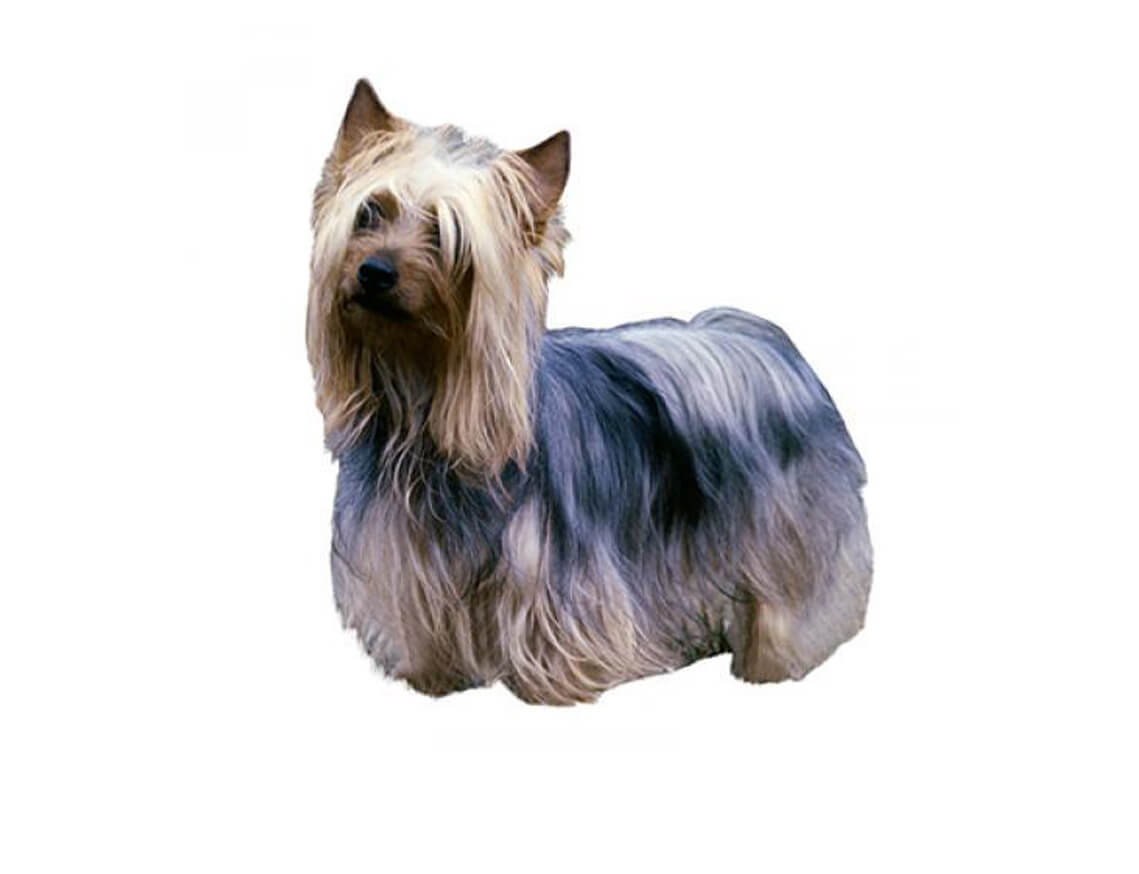
This toy dog's glamorous, long coat is parted along the back and comes in blue and tan, grey-blue and tan, silver and tan, or silver-blue and tan. For full details see the breed standard. When fully grown, he stands at around 23cm and weighs approximately 8-10lb. He looks refined but not delicate.
The need-to-know
- Dog suitable for owners with some experience
- Some training required
- Enjoys gentle walks
- Enjoys walking an hour a day
- Little toy dog
- Minimum drool
- Requires grooming every other day
- Hypoallergenic breed
- Very vocal dog
- Guard dog. Barks and alerts
- May require training to live with other pets
- May require training to live with kids
Personality

Although he's in the toy group, and was bred to be a friendly, loving companion dog, the Australian Silky dog breed also has some terrier-like traits, which, given his ancestors, is no surprise! He's alert, confident, energetic – and still retains some of the hunting instincts of his forebears who killed rodents and even snakes!
History and Origins

Once also known as the Sydney Silky, this Australian dog has Yorkshire Terrier and Australian Terrier ancestors. It's thought that when breeders were establishing the Australian Terrier at the end of the 19th century, they used the Yorkie to improve the blue and tan colouring of the coat. The silky-coated puppies that resulted became the foundation of the breed that we have today.
Nutrition and Feeding

Toy dogs have a fast metabolism, meaning they burn energy at a high rate, although their small stomachs mean that they must eat little and often. Small-breed foods are specifically designed with appropriate levels of key nutrients and smaller kibble sizes to suit smaller mouths. This also encourages chewing and improves digestion.
Exercise

A couple of 20-minute walks a day will keep an adult happy, together with some play in the house or garden. He doesn't require much physical exercise, but he will thrive on the quality time spent with his loved ones. Mental activity is important for this bright little dog, too, to prevent boredom.
Other Information

Health and common issues
Like many small breeds, the Australian Silky dog breed can suffer from kneecaps that may temporarily slip out of place (luxating patellas), a hip disorder and a windpipe problem.
Best family dog breeds
While many dogs are traditionally thought of as being good with children , all dogs and children need to be taught to get on with and respect each other, and be safe together. Even so, dogs and young children should never be left alone together and adults should supervise all interactions between them.